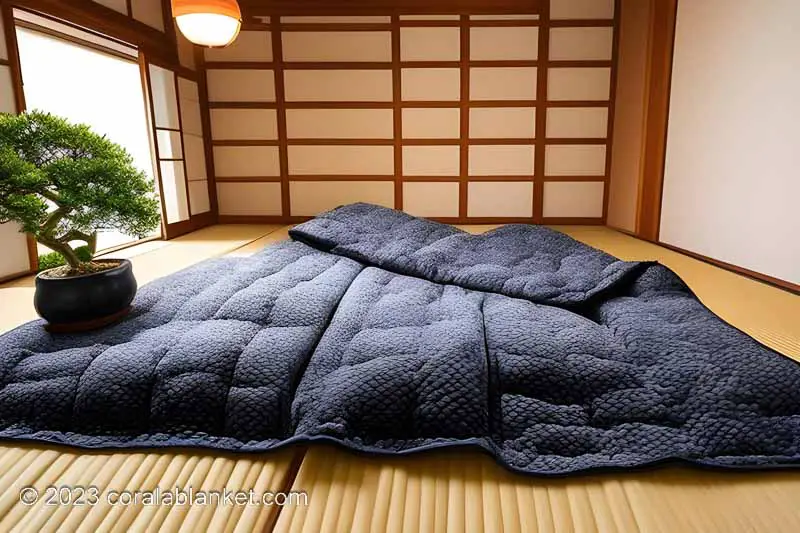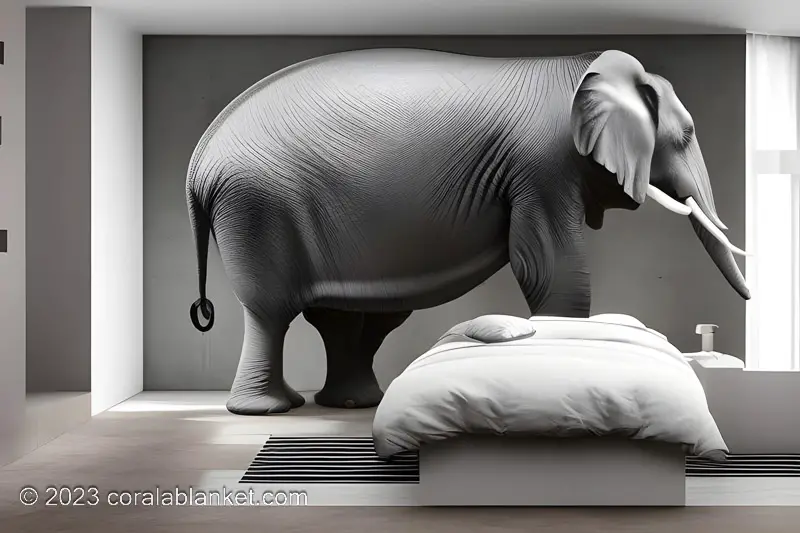Table of Contents
Deep Pressure Therapy
Deep pressure therapy uses deep, firm pressure to relieve tension and anxiety.
Deep pressure therapy has been shown to be effective in reducing anxiety, improving sleep, and reducing stress hormones like cortisol.
If you suffer from anxiety or stress, deep pressure therapy may be able to help you find relief.
Table of Contents
What is deep pressure therapy?
Deep pressure therapy is a form of therapy that relaxes the nervous system by applying firm, gentle pressure to the body. It is sometimes referred to as deep pressure stimulation or deep pressure touch, and involves the use of methods such as holding, hugging, squeezing, swaddling, or stroking.
The technique was discovered by Dr. Temple Grandin, who noticed that cattle would immediately calm down when entering a squeeze chute.
Overall, deep pressure therapy provides a gentle, non-invasive way to regulate the nervous system and promote feelings of calm and well-being, making it a useful tool for people with anxiety disorders and other stress-related conditions, those suffering from excessive stress, tension, hyperactivity, autism, intellectual disabilities, PTSD and ADHD.
To experience deep pressure therapy at home, weighted blankets are a popular and affordable option. Sleeping with the blanket over head is popular among autistic persons as it gives control.

What is the science behind deep pressure therapy?
The science behind deep pressure therapy is based on the principle of proprioception, which is the sense of where your body is in space and the pressure it is feeling. Proprioception is one of the eight senses that make up the vestibular system, which is responsible for our sense of balance and spatial awareness.
When applied, deep pressure signals the brain to release serotonin and melatonin, two neurotransmitters that can make one feel relaxed both mentally and physically.
At the same time, deep pressure therapy can also help to reduce levels of cortisol, a hormone associated with stress. By reducing cortisol levels and increasing levels of calming neurotransmitters, deep pressure therapy can help to reduce symptoms of anxiety and stress. Additionally, deep pressure therapy can also stimulate the production of endorphins, which are natural pain relievers and mood elevators.
What are the benefits of deep pressure therapy?
Calm and relax a person
By applying the firm pressure, serotonin levels increase, the stress hormone cortisol decreases, and melatonin levels are increased. These effects result in a sense of calm and relaxation, reduced stress and anxiety, better sleep, improved focus and school performance, and improved overall wellbeing.
Regulate the nervous system
Deep pressure therapy helps to regulate the nervous system by stimulating the parasympathetic nervous system, which triggers the body’s “rest and digest” response and produces a calming effect throughout the body.
By doing this, deep pressure therapy helps to balance the two main divisions of the autonomic nervous system (the sympathetic and parasympathetic systems as explained in Polyvagal Theory) to reduce stress and anxiety and help with emotional regulation by climbing the polyvagal ladder.
Strange, but you even can improve your vagal tone by sleeping on your side.

Improve sensory processing
Deep Pressure Therapy (DPT) increases body awareness, which can be beneficial when dealing with sensory processing issues. Jumping on trampolines, swinging, and other similar activities can provide sufficient tactile input that can help reduce anxiety.
Applying pressure to the body can be an effective way to reduce stress and help individuals with sensory processing issues better process information.
Improve sleep and restfulness
Deep pressure therapy can help improve sleep and restfulness by reducing stress and anxiety levels, decreasing heart rate, relaxing breathing, and increasing melatonin production.
The gentle pressure has a calming effect on the nervous system and encourages the production of serotonin, which can help lift one’s mood and cue the body that it’s time to rest.
Weighted items such as blankets, sleep masks, and even hugs from a loved one can be incredibly calming and serve as a signal to the body that it’s time to wind down for sleep.
Improve self-regulation and self-soothing skills
Deep Pressure Therapy (DPT) can help improve self-regulation and self-soothing skills by decreasing stress levels, increasing body awareness, and calming the nervous system. By providing a deep pressure input, DPT can activate a calming reflex and reduce arousal levels, helping individuals with sensory processing disorders become more grounded.
With regular use, Deep Pressure Therapy can desensitize the individual to touch, making them less reactive to sensory input and ultimately better able to regulate their emotions and activities.

What are the different ways to provide deep pressure stimulation for people with autism?
Hug Machine by Temple Grandin
The Hug Machine is a device created by Dr. Temple Grandin to provide deep pressure stimulation to people with autism.
Other tools such as weighted blankets, swings, and trampolines can also be used to provide deep pressure stimulation, as well as provide comfort and relaxation in case of an autistic meltdown.
Deep Touch Pressure Therapy
Deep touch pressure is different from other forms of deep pressure stimulation, such as deep tissue massage, weighted blankets and vests, and even hugs, because this type of therapy specifically targets the nervous system and is more focused on relaxation than other forms of deep pressure.
It is also uniquely beneficial for people with Sensory Processing Disorders, as it helps them better process and interpret sensory information.
Pressure Wraps
Pressure wraps are therapeutic tools that provide deep pressure stimulation to people with autism. They are blankets, wraps, or vests that apply a gentle and consistent pressure across the body to help reduce anxiety and sensory overload. Pressure wraps can help regulate the nervous system, improve relaxation, and reduce self-stimulating behaviors.
They can also improve focus and attention while helping manage emotions. Weighted blankets are popular due to the even distribution of weight across the body, while compression clothing and squeeze-and-hug machines deliver a more concentrated effect.
Sleeping with Weighted Blankets
Sleeping with a weighted blanket can offer a number of calming benefits for people with autism. Research has found that deep pressure therapy, which is what a weighted blanket provides, can help regulate the nervous system, reduce anxiety, and promote better sleep.
The effects of weighed blankets can be especially beneficial for those on the autism spectrum, who often experience sensory overload and difficulty sleeping.

Weighted blankets have been invented to reduce anxiety and stress. They work on the principles of Deep Touch Pressure for creating a calming environment and provide users with comfort and security. Additionally, a weighted blanket can help to reduce insomnia, which is a common issue for those with autism.
Studies have shown that weighted blankets can help reduce tossing and turning, allowing the user to rest more deeply and peacefully.
Foam Roller
Foam rollers can be an effective tool for providing deep pressure stimulation for people with autism. The physical compression of the foam roller helps to reduce muscle tension and trigger the body’s relaxation response.
The roller also helps to massage and stimulate the pressure points in the body, providing relief from pain and anxiety. Additionally, the rolling motion of the foam roller can help to stimulate a calming and soothing effect.
For example, a child with autism might benefit from using a foam roller to help them relax and focus on a task or to help them transition from one activity to the next.
Deep Tissue Massage
Deep tissue Massage can be an effective form of deep pressure stimulation for people with autism. Massage can help alleviate stress and anxiety in people with autism by reducing muscle tension and triggering the relaxation response.
For example, joint compressions have been found to be especially calming for many with autism, but it may take some trial and error to figure out how to get your child to comply.
Additionally, a professional masseuse trained in deep pressure massage can also help provide relief from aches and pains.
Compression Clothing
Compression clothing, also known as compression garments, are a type of clothing designed to provide deep pressure stimulation to individuals with autism and/or sensory processing disorders. Compression garments at night provide a full-body, calming effect, making them ideal for those with sensory sensitivities, ADHD, and anxiety. These garments provide a “hugging” sensation through their tight fit, applying gentle pressure across the body to help reduce stress, regulate the body and mind, and promote relaxation.
An example of a compression garment is a weighted compression vest, which offers deep touch pressure input through its weighted fabric. This type of garment can be especially beneficial for those on the go who need to feel calm and centered throughout the day.
Sensory Processing Therapy
Sensory processing therapy is a form of treatment designed to help people with autism manage their sensory processing difficulties. It is a type of tactile sensory input that is used widely by occupational therapists to help them react appropriately to the world around them.
This type of therapy provides deep touch pressure through the use of weighted blankets, weighted vests, weighted sleep masks, weighted pads, heavy quilts, heavy clothes, or other compression products.
Hugging Therapy
Hugging is a powerful connection between two people. It is believed to have numerous physical and mental health benefits, a 30 second hug can increase levels of oxytocin (the love hormone), lower levels of cortisol (the stress hormone), and promote happiness and closeness.
Hugging therapy provides deep pressure stimulation for people with autism by applying firm, gentle pressure to the body. This pressure can be applied through hugs, squeezing, holding, swaddling, or stroking. For example, a parent may wrap their crying infant tightly in a blanket to provide a calming effect.

Similarly, a person with autism can experience the same calming effect from deep pressure therapy. It can help them relax and regulate their mood, as well as provide a sense of security and comfort. (Self-hugging is also a technique to hug yourself and feel better.)
The Butterfly hug method of providing bilateral stimulation in EMDR therapy is a simple and easy relaxation technique. It works through the act of crossing your arms across your chest, while gently tapping both sides of your body.
Weighted Stuffed Animals
Weighted Stuffed Animal is a stuffed plush animal that has been weighted down with a certain amount of weight. This extra weight provides physical and mental stimulation for the person using it, which is especially beneficial for children
Deep Touch Pressure Therapy Dogs
Dogs can be trained to perform deep pressure therapy (DPT) as a service dog to help so you can use your deep pressure therapy Dog to help yourself transition from a stressed state to a more relaxed one.
Who Can Benefit From Deep Pressure Therapy?
1. People With Sensory Processing Disorder
People with Sensory Processing Disorder (SPD) who can benefit from deep pressure therapy include those with autism, hyper- or hypoactivity to sensory input, an unusual interest in sensory aspects of the environment, and difficulty processing proprioception.
Those with autism can have difficulty functioning in day to day life due to challenges with bright lights, certain textures, smells, and pain. Deep pressure therapy can provide a calming effect and reduce anxiety, while also improving the person’s sense of body awareness.
It applies even pressure over the entire body, stimulating the sensory nerves and helping the brain to process sensory information more efficiently. This may help people to cope more effectively with their environment, enabling them to attend classes in a typical classroom and socialize with other students. It has also been found to improve sleep and reduce restlessness or clumsiness.
2. People With Autism Spectrum Disorder
People with autism spectrum disorder who can benefit from deep pressure therapy include those with sensory processing difficulties, proprioceptive difficulties, hypersensitivity to touch, and various other physical, sensory and mental disabilities.
Deep pressure therapy can help people with autism and severe intellectual disabilities to improve their mood and behavior. Furthermore, deep pressure therapy can help individuals with autism switch from the sympathetic to the parasympathetic system.
3. People With Anxiety Disorders
People with anxiety disorders can benefit from deep pressure therapy. Research has shown that deep pressure therapy can be particularly helpful for people with anxiety disorders, as it can help reduce symptoms such as worry, nervousness, and fear.
Additionally, deep pressure therapy has been shown to have a calming effect on the nervous system, which can help people with anxiety feel more relaxed and in control.
However, it is important to note that deep pressure therapy is not a cure for anxiety, and it is not a substitute for traditional forms of treatment such as therapy or medication.
4. People With Attention-Deficit/Hyperactivity Disorder
Deep pressure therapy may be beneficial for those with ADHD, autism spectrum disorder, sensory processing disorder, and proprioception difficulties. Specifically, children with ADHD may benefit from the use of weighted vests, while those with autism may benefit from different types of deep pressure tactics such as pressure brushing or weighted blankets.
Natural ADHD supplements can also help with managing symptoms by providing the body with essential vitamins and minerals.
Those with sensory processing disorder may also benefit from deep pressure therapy in order to reduce their sensitivity to certain sensory inputs such as bright lights, certain textures, and smells. Proprioception difficulties may also be improved with deep pressure therapy as it can help to reset the body’s position in space and increase the body’s awareness of its movement.
5. People With Chronic Pain
People with chronic pain can benefit from deep pressure therapy, anyone who is feeling overwhelmed, struggling with relentless anxiety, back pain or simply wanting a little help relaxing can benefit from deep pressure therapy regardless of a diagnosis.
6. People With Post-Traumatic Stress Disorder
People with post-traumatic stress disorder (PTSD) who can benefit from deep pressure therapy. Those who may experience regular overstimulation, fatigue, restlessness, when you move much in your sleep, or stress due to their daily demands can also benefit from deep pressure therapy. The immediate effects of deep pressure are also beneficial for young people with autism spectrum disorder and severe intellectual disabilities.
How to choose the right deep pressure technique?
Choosing the right deep pressure technique can be daunting. To help guide you in making the best choice for your child, here are some step-by-step instructions:
- Start with the free or low cost solutions to try it out. This includes giving your child deep pressure massage, laying on a couch or floor while a parent presses a pillow or cushion over the body, or getting tightly wrapped in a blanket. You can also try joint compressions and the Wilbarger Brushing Protocol.
- Consider the smaller and more portable options, such as weighted blankets and sensory hammocks.
- Research the different techniques to determine which is best suited for your child. Consider their individual needs and look for reviews of the different techniques.
- Speak to your child’s therapists and other professionals to get their advice. They may be able to provide insight on what has worked best for other children with similar needs.
- Try using the deep pressure technique with your child and observe their reaction. If it seems to have a positive effect, then you may have found the right technique for your child.
- Monitor your child’s progress over time and adjust the technique as needed. Since individual responses can vary, it’s important to customize the therapy to the individual needs of the recipient.

FAQs
What sensory system is stimulated by deep pressure therapy?
Deep pressure therapy stimulates the proprioceptive sensory system which is responsible for the body’s sense of awareness of its position in space. When the body is subjected to firm, consistent pressure, this sensory system is activated and produces signals that travel to the brain. These signals send calming messages to the brain, resulting in feelings of relaxation and reduced anxiety.
Proprioceptive input also helps to improve body awareness, coordination, and focus, as well as to contribute to better sleep.
What are some common deep pressure therapy tools?
There are a variety of tools available to provide deep pressure stimulation like deep pressure touch, or “hand hugs,” which involve using the palms of your hands to apply firm pressure to the body; and joint compressions, which involve gently squeezing the person while they are in a relaxed state.
Other solutions include compression clothing, weighted blankets, weighted vests, pressure vests, neck wraps, lap weights, weighted “hug” backpacks, pea pods, and therapy dogs.
How does the parasympathetic nervous system respond to deep pressure therapy?
Deep pressure therapy is an effective way to stimulate the parasympathetic nervous system and promote relaxation. When deep pressure is applied to the body, it triggers a shift in the central nervous system from the sympathetic nervous system (SNS) to the parasympathetic nervous system (PNS).
The PNS is responsible for the body’s “rest and digest” functions, lowering the heart rate and blood pressure, and increasing levels of serotonin and dopamine. This physiological relaxation response produces a calming effect throughout the body, helping to reduce anxiety and stress.
How does deep pressure therapy help those with sensory processing disorder?
Deep Pressure Therapy (DPT) is an effective treatment for individuals with sensory processing difficulties, such as those diagnosed with autism or sensory processing disorders. DPT can help reduce stress, anxiety, arousal levels, and cortisol levels in the body. It also helps in increasing body awareness and understanding of the individual’s space.
DPT has been proven to help in managing sensory processing difficulties, as it helps to calm the individual and reduce their anxiety.
What other therapies are used in conjunction with deep pressure therapy?
In addition to deep pressure therapy, other therapies that are often used in conjunction with it include massage, aromatherapy, acupuncture, reflexology, and biofeedback.
Aromatherapy uses essential oils to improve physical and emotional health. You even can leave a diffuser on while you sleep, but it is best to choose one with a timer that will automatically shut it off after 2-3 hours.
Other physical therapies that may be used in combination with deep pressure therapy include proprioceptive stimulation, vestibular stimulation, movement therapy, and sensory integration. Cognitive therapies, such as music therapy, art therapy, and talk therapy, can also be used to help in conjunction with deep pressure therapy.
Finally, weighted blankets and other weighted items are increasingly being used as a form of deep pressure therapy to help people relax and improve their sleep.
- 10 Tips to Improve Sleep Amid Social Media Use - October 22, 2024
- Top 9 Screen Habits Sabotaging Your Rest - October 21, 2024
- 10 Nighttime Routine Mistakes - October 21, 2024


